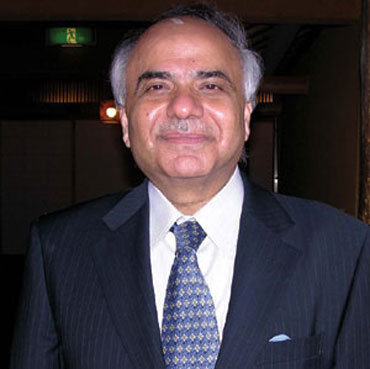
Hira’s name is synonymous with the Sai mission in Japan, where he has worked hard to create a robust Sai movement and love for Vedic learning.
Sindh Courier
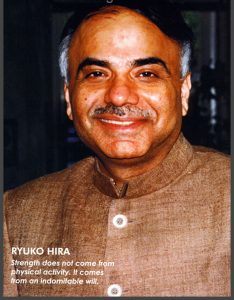 Ryuko Hira of Japan is a passionate devotee of Sathya Sai Baba, an Indian guru from Puttaparthi in the present-day Anantapur district of the Indian state of Andhra Pradesh.
Ryuko Hira of Japan is a passionate devotee of Sathya Sai Baba, an Indian guru from Puttaparthi in the present-day Anantapur district of the Indian state of Andhra Pradesh.
Born on May 31, 1948 at Jaipur in a Sindhi family, who had migrated from Sindh at the time of partition in 1947, Hira’s name is synonymous with the Sai mission in Japan, where he has worked hard to create a robust Sai movement and love for Vedic learning.
Within the Sri Sathya Sai Organization, he has served as the Overseas Chairman of a Zone that spans across Asia, the Middle-East and Africa, covering a total of 80 countries.
Despite his conscious effort to maintain a low profile, this spiritual seeker is also one of the most influential Indians around the globe. His vast business empire and commitment to philanthropy extend across continents.
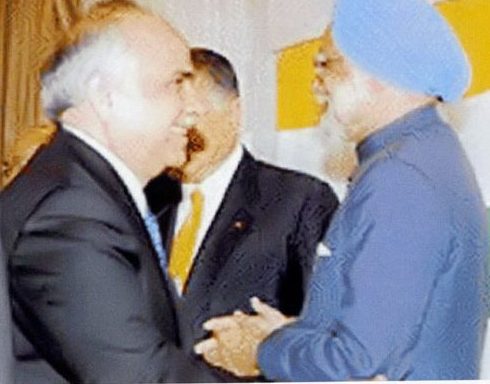
Chairman of the Ora Group of Companies in Japan, Ryuko Hira owns and operates over 50 hotels and resorts in Japan, and provides management and advisory services to 90 hotels. He also runs many other businesses. In 2022, the government of India conferred on Hira the Padma Shri award, the third highest award in the Padma series of awards, for his distinguished service in the field of trade and industry, in recognition of his service as a “senior business leader in Japan instrumental in promoting India-Japan friendship”. Earlier, in 2010, the government of India conferred on him the Pravasia Bharatiya Samman award, the highest Indian award for Non-resident Indian and Overseas Citizen of India or an organization or institution established and run by Non-Resident Indians or Persons of Indian Origin, for his entrepreneurship and his contribution to the Indian community in Japan in the cultural, economic and social fields.
Interestingly, Ryuko Hira was born Kamlesh Punjabi, in Jaipur, India. He graduated in Gemmology from the Gemmological Institute of America. He studied a 12 week course at the Cornell University School of Hotel Administration and attended Japanese language courses at Sophia University, Tokyo. He has a diploma in character development from the Institute of Sathya Sai Education, Prasanthi Nilayam Andhra Pradesh. In the late 1970’s, Hira opted for Japanese citizenship.
An article published in a compilation of the world’s most influential Indians described him thus: “Hira has the characteristics of the 16th century Samurai warriors who were powerful yet gentle, strong as well as kind. A Samurai is always cautious, careful, prompt and accurate. Hira with his gigantic multi-operational business empire, remains calm and composed in his actions, equally dedicated to his activities of service to mankind.”
This Sai Samurai has also authored the book: The Study of Sathya Sai.
In an interview with Radio Sai’s Karuna Munshi which was first aired on Aug 6, 2013, Hira talked about his life journey and Sai Mission:
The journey of Sai mission in Japan began in Kobe in 1975. I was in my twenties then. The story begins with the Lord entering Japan through the city of Kobe. The word ‘Kobe’ in Japanese language means God’s door.
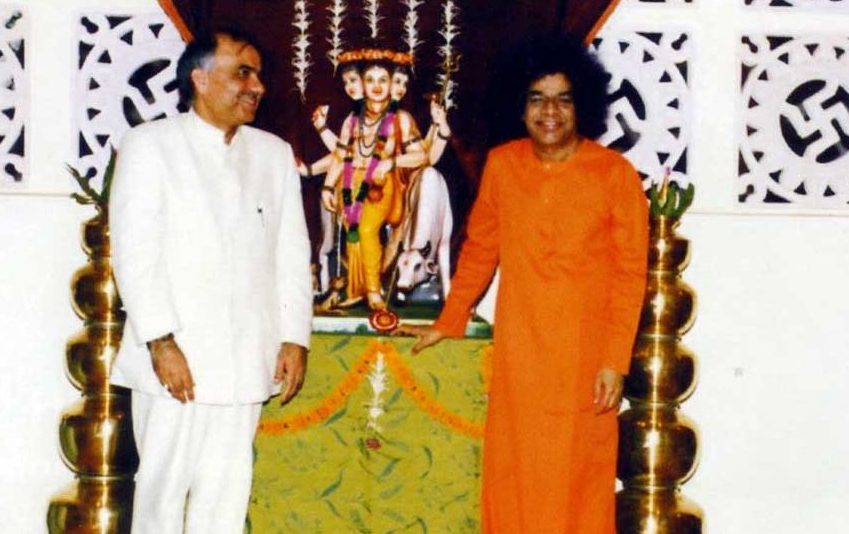
The pioneer Sai devotees – J.T. Khubchandani, and his Chinese spouse sister Regina, late Ram Chuggani and his wife Kamala, Dayal and sister Hoorey – they came to Japan to introduce Sai and His teachings.
Due to my social status, I was approached by Khubchandani but I knew nothing about Sai. Khubchandani told me that Sai Baba knows me and he has asked him especially about me. I told him that I have nothing to do with Baba. I do not know Him and I thought perhaps it was all a trap. So I persistently refused to do anything for the group of Sai coming from Kobe to Tokyo.
Khubchandani was very persistent and he convinced me that his two sons who have been devotees of Sai have been successful in business – namely Kishan Khubchandani from Africa and Nari Khubchandani from Indonesia. He said if I listen to him, I too will be more successful in business. So I had some interest, as a businessman to explore.
So they came to Tokyo and I invited all the Indians in Tokyo. I said I will only provide a hall and the rest you should take care of. They displayed the pictures and they gave a talk on Baba and they introduced the books. And for the sake of courtesy, I attended the meeting and suddenly at the end of the meeting when the presentation was finished, Khubchandani stood up and told the audience that he wants to establish Tokyo Sai Centre and without asking me he said that “I have appointed Mr. Hira as a convener”. Though I objected very much and resisted, it just happened that the Indians started clapping and out of the blue I was unwillingly placed into this new and unknown world of Sai.
The Kobe center people had opened the Tokyo Sai Centre. They said that Sai had sent a message that the all samitis must hold the twelve hour bhajan for Shivaratri. And for me it was a great nuisance to inform all the Indians in Tokyo as there was no email and the faxes had just begun – so we had to send a lot of post mail. I sent about 200 invitations for the very first Mahashivaratri in Tokyo, each post costing about 80 cents and I made all the other preparations.
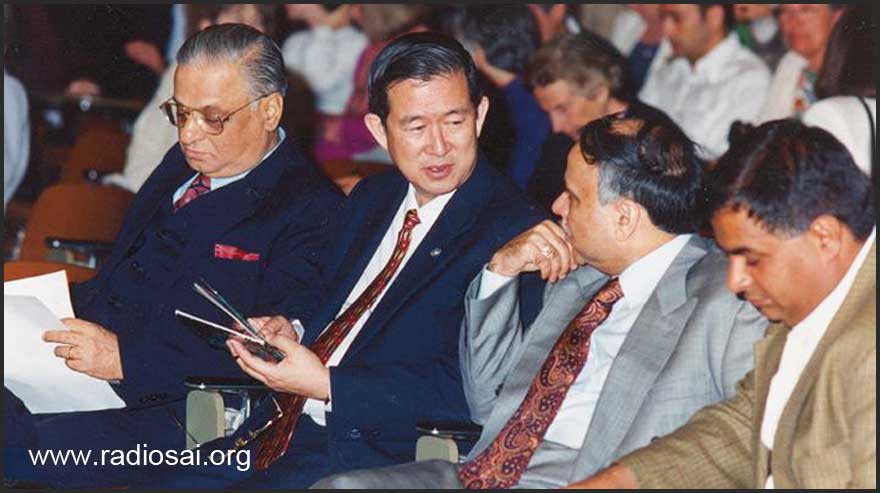 As I knew nothing about conducting this twelve hour service, I asked Mr. Khubchandani and he said that all you have to do is just sing the bhajans from 6 p.m. till 6 a.m. with a picture of Baba or Shiva and you should fast all night. But I had no picture of Shiva in my house and only one of Sathya Sai Baba, left by Mr. Khubchandani.
As I knew nothing about conducting this twelve hour service, I asked Mr. Khubchandani and he said that all you have to do is just sing the bhajans from 6 p.m. till 6 a.m. with a picture of Baba or Shiva and you should fast all night. But I had no picture of Shiva in my house and only one of Sathya Sai Baba, left by Mr. Khubchandani.
Anyway, the day of Shivaratri came and I had a busy day at office and I came in time to find that not a single person had come to attend this Mahashivaratri bhajan in Tokyo. So I thought that they will be late in coming. And I started the prayers and bhajan. But I had never sung a bhajan in my life. I had some experience of playing a piano which helped me to play a few keys of the harmonium. When I started my life’s first bhajan on Shivaratri day and since no one came to sing, I was all alone singing and reciting the chorus continuously, and I was singing the same bhajan over and over again because I knew only one or two from that book! My voice became rather hoarse and tired and as I was told to sing continuously, I could not go to the wash room and had to just stay put. Well I looked at Sai’s picture and I told him ‘buddy I can’t do this anymore because I know only these two or three bhajans and we are going to stop it now and I am going to sleep’.
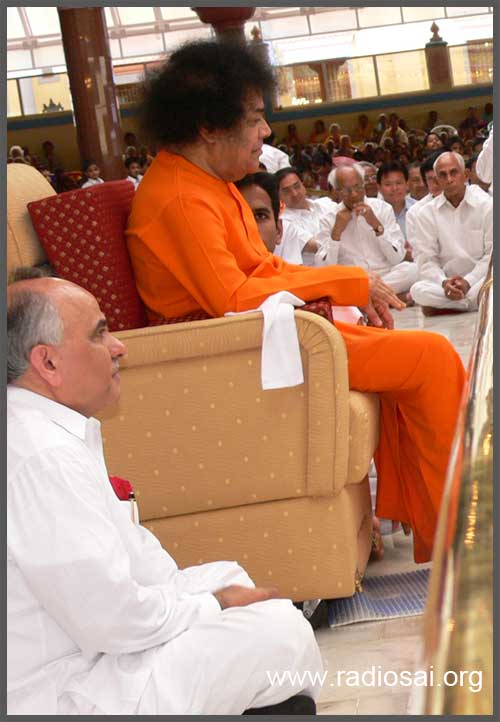 So I decided to give up and close this bhajan when a strange thing happened. The telephone bell rang in my house. As there was no one at home, I picked up the phone and I just said “Hello, hello” on the phone but no one answered and suddenly on the telephone a very sweet and melodious bhajan began and it went on and on and on. The voice was so captivating that for the first time I experienced tears in my eyes and I cried. The bhajan was melodious and so captivating that my whole body, especially the head which was exhausted by singing for few hours like an endless tape was recuperated – that bhajan went on for a long time, about 8 or 9 minutes. It was a female voice.
So I decided to give up and close this bhajan when a strange thing happened. The telephone bell rang in my house. As there was no one at home, I picked up the phone and I just said “Hello, hello” on the phone but no one answered and suddenly on the telephone a very sweet and melodious bhajan began and it went on and on and on. The voice was so captivating that for the first time I experienced tears in my eyes and I cried. The bhajan was melodious and so captivating that my whole body, especially the head which was exhausted by singing for few hours like an endless tape was recuperated – that bhajan went on for a long time, about 8 or 9 minutes. It was a female voice.
After it stopped, I felt very different and I restarted the bhajan this time with more awe rather than as an obligation to Khubchandani. Anyway the clock started to show 6 a.m. and I was relieved that I could now eat breakfast and I realized that I don’t have the picture of Shiva, so how do I finish the ceremony?
And again a strange thing happened. This time it was not the phone but the doorbell that rang just a little before 6 a.m. A cousin brother Suresh N. Punjabi came unexpectedly as an Air India flight was delayed and he had landed in Tokyo on his way to Osaka. And as it turned out, he had brought a picture of Shirdi Sai Baba with a lingam and snake on the picture. So we finished the bhajan and started to eat our breakfast.
I used to be a non-vegetarian – so my usual breakfast used to be eggs, ham or sausages and bacon, but somehow that morning, I could not eat it. The body just would not accept it even though I was very hungry. And the cook who prepared the breakfast said I may have lost my appetite because of doing funny things by singing all night and fasting.
So I just took some tea and after that I began to smoke. I was a heavy smoker, smoking two or three cigars a day. And I would have about two packets of cigarettes. But soon as I smoked, the tongue started to burn and again a strange phenomenon took place at lunch or dinner. I could not eat meat nor could I drink alcohol or smoke.
Suddenly I realized that overnight a magical sort of internal transformation of lifestyle had taken place. Because of my professional work I would usually eat two or three dinners in a night with different groups. My assistants would take two or three groups and I would attend each dinner for 50 or 60 minutes and they were very large, banquet style dinners. With two or three dinners in the same night, entertaining high level people, it was impossible to remain a vegetarian in those days.
This was the first miracle and then I began to study books on Baba. The first book that I read was ‘Loving God’ by brother Kasturi and other books which made me understand how Baba respects India as a nation. Though I was born as an Indian, I had no opportunity to study about India and its glory. And after reading ‘Loving God’, I could respect and serve India as a motherland.
Change of Name
The change of my name, was not by my choice but by necessity. I am the same age as independent free India. The British rule had not provided enough schools and universities. So even in big cities like Mumbai where I spent my childhood, the schools were open-air outdoor schools to be shared with street chickens or street pigs and pigeons and dogs coming in and out of the class. And the rains would really drench us all. Life was miserable and to ease the great difficulties, the Communist Party of India would go to schools and they would offer raincoats and gumboots and they would recruit high school students as volunteers for the Communist Party.
In my own personal case during my middle school, a veteran Indian actor Balaraj Sahani and others would come to the school and recruit students on behalf of the Communist Party. So India’s political situation that time was rather fragile and in the high school they had the National Cadet Corps – that focused on high school students to join the junior army and to serve 30 days in the camps.
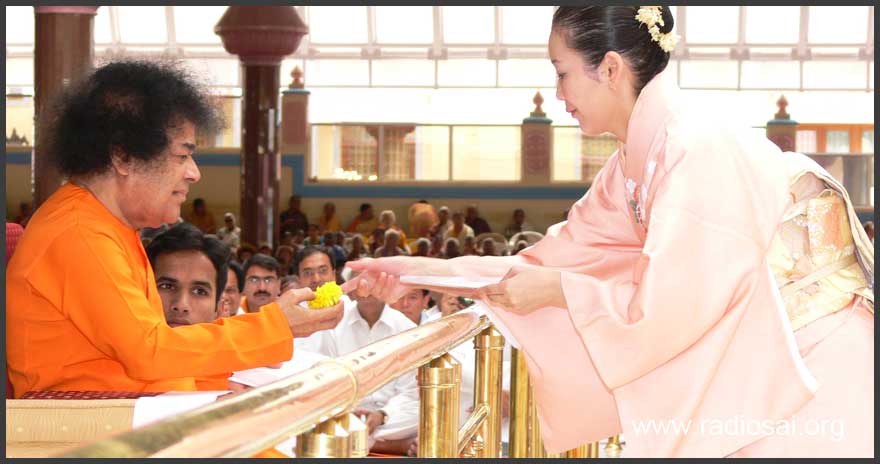 I was fortunate as my family had some small overseas business which is now nearly 100 years of age. Soon as I finished high school, the Pakistan and the Chinese wars were going on and the ladies and the young ones at home were sent abroad for safety. So a decade later in the 1970s, the situation in India got from bad to worse and the government of India nationalized all the major businesses including the banks, insurance companies, the airlines and others to stabilize the nation. And the major business houses and their overseas assets were also being nationalized.
I was fortunate as my family had some small overseas business which is now nearly 100 years of age. Soon as I finished high school, the Pakistan and the Chinese wars were going on and the ladies and the young ones at home were sent abroad for safety. So a decade later in the 1970s, the situation in India got from bad to worse and the government of India nationalized all the major businesses including the banks, insurance companies, the airlines and others to stabilize the nation. And the major business houses and their overseas assets were also being nationalized.
Being a stateless refugee family from Sindh, Pakistan where we had lost and left everything due to the partition (of India and Pakistan), we did not want to live in poverty once again. So my eldest brother said one family member should become a Japanese national to save the family’s assets from being nationalized in foreign countries.
Being youngest of five brothers, and given some fluency that I had in the Japanese language, I was asked to become a Japanese citizen. But having intensely read Baba’s books and teachings about the supremacy of the motherland, I had great resistance to change my name and to give up my Indian nationality. I went to the sacred Mount Fuji to meditate intensely on Baba for guidance on whether I should change my nationality. I came back with the answer that a passport document of nationalization or a register does not make you an Indian or another national – it is simply a matter of convenience of life.
The reason for change of name is that less than one percent of Japanese population speaks English. So when a foreign person has a Japanese nationality, they can’t write his name in alphabets because our script is calligraphic. We draw our characters. For instance, if you want to write a river you simply draw two banks and water in between.
Thus pictorial characters make the Japanese script. If one had to write my Indian name in Japanese language, it would be very funny if it was literally translated – Kamal means a lotus and ‘esh’ means the king of the lotus and my last name Punjabi in which Punjab refers to five rivers …… it is a bit too out of place in calligraphy.

And at the bureaucratic offices there were no computers, and they couldn’t write in alphabets, and we had to change the name by law and that was very trying. So there is a Hindu temple (of Lord Vishnu) on top of Mt. Hira in Shiga prefecture which is near Kyoto. At that temple there was a priest who calculated all my Indian names and ancestral names and gave me a name called Hira Ryuko. Hira is the name of the mountain on which the temple stands and in Ryuko, ‘Ryu’ means the dragon and ‘ko’ means tiger. The dragon as you know has originated in the Indian mythology and then gone to the eastern countries and ‘ko’ the tiger or lion sits next to Baba.
So the dragon represents prosperity in the eastern culture and the lion or the tiger represents the strength, neither of which I have. I don’t have prosperity and I don’t have strength.
Jyoti Meditation
I practice Jyoti Meditation every day. This Jyoti meditation is for three things – it gives the breath, thought and the time. So when we do the Jyoti meditation the life source of our breath is regulated which involuntarily controls the thought process and it brings a tremendous speed of action which saves a lot o time that can be used for Sai Seva.
This simplest of theories of Bhagawan (Jyoti meditation) grants infinite rewards. There are seven steps involved. The first is the environment, as the breath comes from the environment. If you are in good environment, good thoughts come, which is called ‘Satsang’ all the time, be in good place. Then the breath itself conveys the thoughts and the thoughts themselves lead to the so called will power or the Ichcha Shakti – to do something and from that Ichcha Shakti we come to the Kriya Shakti that is to exercise the actual action power. And from that our habit or character is formed and that habit or character decides the destiny of man.
These seven processes of Dhyana Vahini, are one of the handiest tools for business, making it the easiest to take care.
Youth Wing
There was no youth wing in the overseas Sai Organization at that time. We had no youth wing till we started it at the first Asian Sai centers and later the other countries joined. So we organized the first international youth conference and a number of youth schemes were started which were later on adopted by Indian Sai Samitis. And I believed that the best way to see Swami’s reaction for youth program was to deliver Baba’s very own lifestyle as a youth.
Very little was known about his youth years, especially in English language at that time. So I asked Swami for three things – permission to hold the first ever exhibition on the theme of Mother Eswaramma and this exhibition was held at Whitefield in Bangalore.
_______________
This write up is based on excerpts from an interview of Ryuko Hira (Feb 20, 2014) and the information available on Wikipedia.